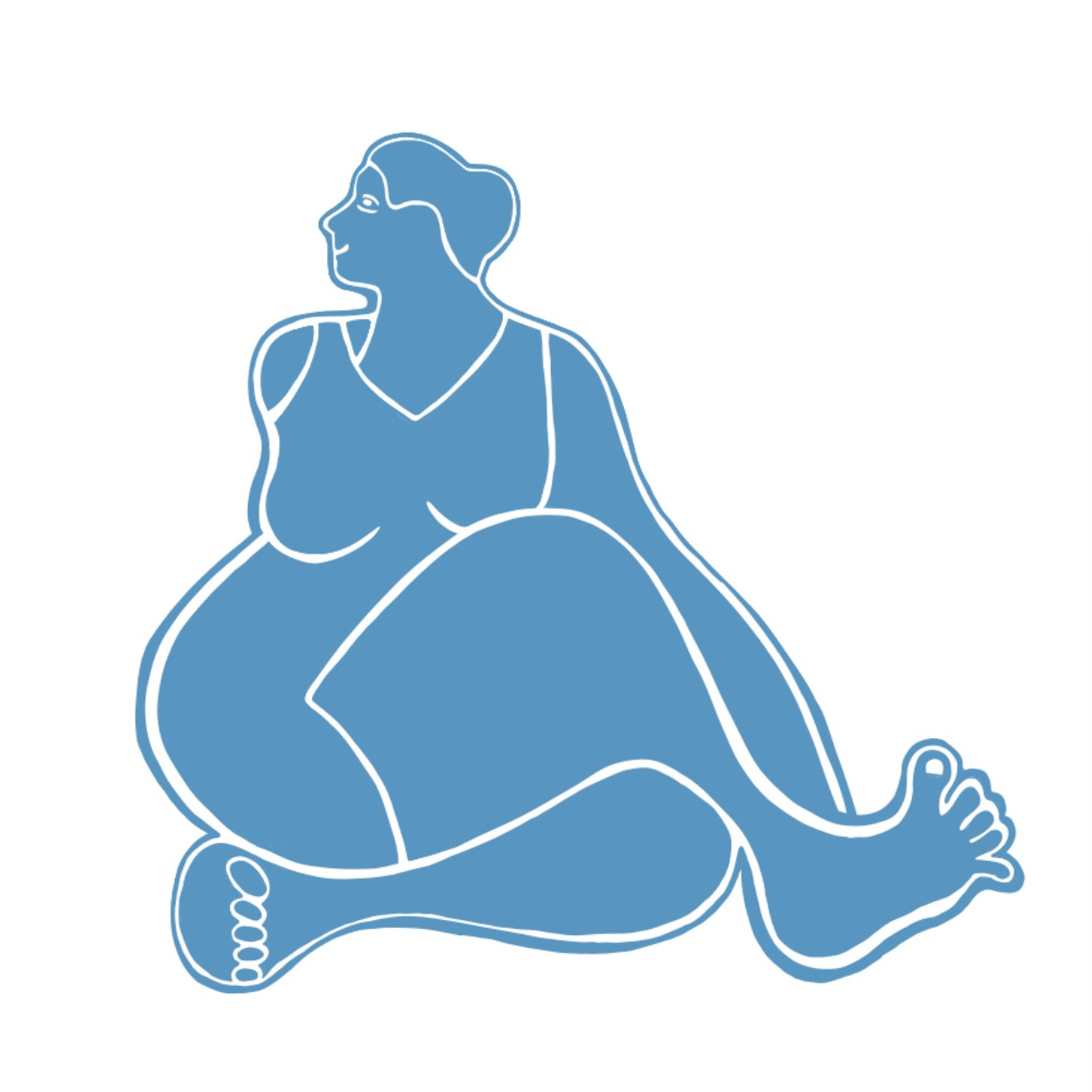Welcome to Yoga Poetry Radio. Today we are going to practice a breath that is called “cyclic hyperventilation” by the scientists and academics. It incorporates some elements of yoga’s Agni Sara and also a Tibetan style breath called Tummo popularized by Wim Hof. This podcast is a health aware companion to my newsletter on loss and liberation called Songs of Forgiveness. I invite you to click through to the show notes and check out my writing. I post my letters with the phases of the moon and I invite you to subscribe and travel time along with me.
Expect this breath to feel awkward at first but it requires no special equipment.
We begin the practice of Diaphragmatic Breathing. Draw your attention to your diaphragm, the jellyfish-like muscle that is nestled at the base of your ribcage. Parallel to that is your pelvic floor, a hammock of muscles at the base of your spine. These two muscle frameworks create the bottom and top of the canister of your torso. They move in tandem to each other when you breathe. The diaphragm on the inhale and in turn compresses and flattens the pelvic floor to create the vacuum in your chest that draws the breath in. When you press the air out both structures move upwards respectively.
Practice being aware of this right now. Allow your belly to relax and expand outwards on your inhale. Pull everything, belly and pelvic floor, inward and upward as you exhale. Be conscious of this movement during the next few minutes while I explain Cyclic Hyperventilation. This consciousness of breathing with awareness of the pelvic floor is is a therapy in and of itself. Be aware of this all day long, through all activities, and it will have the biggest change of anything on your life.
Cyclic Hyperventilation has been studied extensively in recent years in thanks to the amazing cold-temperature feats of Wim Hof. He has used breathing to withstand hypothermia and frostbite and even E.coli in one particular study. We will breathe all the way in through the nose. This gives you the benefits of nasal nitric oxide production, which is necessary to your heart. And all the way out through the mouth to really exhale all the carbon dioxide from your lungs. This breath will allow you to hold the out breath for longer and through the process release of hormones and cytokines which help regulate your immune system and reduce inflammation.
Read more about this in the resources linked below in the show notes.
In addition, during the hold, we can explore the practice of Agni Sara here, which is a semi-involuntary muscular pandiculation. The tummy, when the breath empties out and the diaphragm pulls up under the ribs, naturally pulls back into the spine in an abdominal contraction. This has been used as postpartum therapy in the National Healthcare programs of France and Spain and will strengthen and rehabilitate core and pelvic floor health after birth and realign displaced organs after pregnancy. To set up the conditions for Agni Sara, you tuck your chin while holding on the out breath. Lengthen your spine and pull your diaphragm up under your ribs. Here your stomach may hollow out and you can connect to that feeling of the drawing upwards of your pelvic floor.
If this does not happen for you in this first practice, not to worry, with continued practice and proper awareness, it will.
Find the book Breath, linked below. In the chapter entitled “Hold It” Nestor makes the case that Carbon Dioxide Therapies had long been studied and proclaimed to be helpful, but somehow that knowledge was lost in the 1950s as the hopes of new pill-form promises took its place.
That is all to say that the breathing practice I share today has been proven by many peer-reviewed studies.
As Andrew Huberman, YouTube phenom and professor at Stanford, podcast linked below, says the protocol for this practice is about 30 breaths, for about 3 cycles. This does not need to be an exact practice. Begin this as an exploration, doing the best you can, noticing your incremental change in comfort level as you practice it regularly. Expect this to feel awkward at first and with time get more comfortable. It certainly has for me.
Thank you for listening and if you find this information and practice helpful please feel free to share it. Like and subscribe so others can find it. Follow the show notes back to my newsletter to see what else I share.
Resources for further study:
Article with discussion and practice of Agni Sara from the Himalayan Institute. https://himalayaninstitute.org/online/agni-sara-core-practice-refinements/
Article with practices of Agni Sara on Yoga International https://yogainternational.com/article/view/guide-to-agni-sara
Breath by James Nestor. This book discusses in detail the role Carbon Dioxide takes in our processes. Much of the research and discoveries this book shares is mind boggling. I relied particularly on the “Hold It” chapter.
An episode on the Huberman Podcast on “Using Your Nervous System to Enhance Your Immune System” Timestamped with this link: 01:12:36 Tool 7: Activating Your Immune System w/Cyclic-Hyperventilation, Alkalinity






